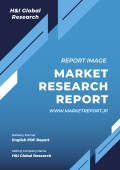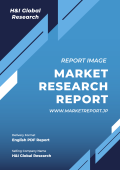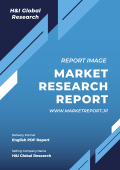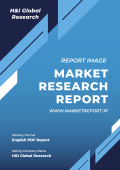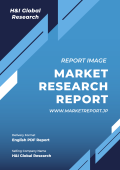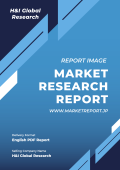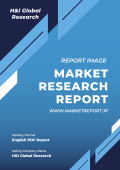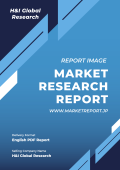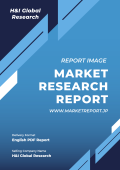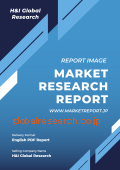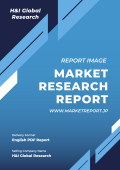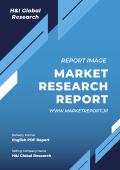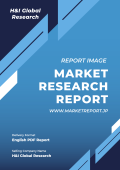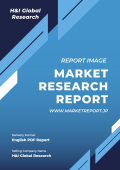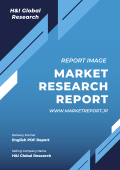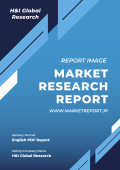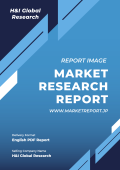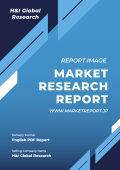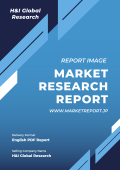| ■ 英語タイトル:Acquired Orphan Blood Diseases Therapeutics Market Report by Therapy (Recombinant Factor, Immunoglobulin Infusion Therapy, Activated Prothrombin Complex Concentrate, Thrombopoietin Receptor Agonists, and Others), Disease Indication (Acquired Agranulocytosis, Acquired Hemophilia, Acquired Von Willebrand Syndrome, Paroxysmal Nocturnal Hemoglobinuria (PNH), Myelodysplastic Syndrome, and Others), Distribution Channel (Hospital Pharmacy, Retail Pharmacy, and Others), and Region 2023-2028
|
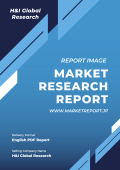 | ■ 発行会社/調査会社:IMARC
■ 商品コード:IMARC23JLY059
■ 発行日:2023年7月
■ 調査対象地域:グローバル
■ 産業分野:医療
■ ページ数:142
■ レポート言語:英語
■ レポート形式:PDF
■ 納品方式:Eメール
|
■ 販売価格オプション
(消費税別)
※販売価格オプションの説明はこちらで、ご購入に関する詳細案内はご利用ガイドでご確認いただけます。
※お支払金額は「換算金額(日本円)+消費税+配送料(Eメール納品は無料)」です。
※Eメールによる納品の場合、通常ご注文当日~2日以内に納品致します。
※レポート納品後、納品日+5日以内に請求書を発行・送付致します。(請求書発行日より2ヶ月以内の銀行振込条件、カード払いも可能)
※IMARC社の概要及び新刊レポートはこちらでご確認いただけます。
*** レポート概要(サマリー)***IMARC社によると、2022年に81.2億ドルであった世界の後天性希少血液疾患治療市場規模は、2023年から2028年の間にCAGR 8.30%成長し、2028年には133.4億ドルに達すると見込まれます。本報告書では、後天性希少血液疾患治療の世界市場について調査し、序論、範囲・手法、エグゼクティブサマリー、イントロダクション、療法別(組換え因子、免疫グロブリン点滴療法、活性化プロトロンビン複合体濃縮物、トロンボポエチン受容体アゴニスト、その他)分析、疾患別(後天性無顆粒球症、後天性血友病、後天性フォン・ヴィレブランド症候群、発作性夜間ヘモグロビン尿症(PNH)、その他)分析、流通チャネル別(病院薬局、小売薬局、その他)分析、地域別(北米、アジア太平洋、ヨーロッパ、中南米、中東・アフリカ)分析、推進要因・制約・機会、バリューチェーン分析、ファイブフォース分析、価格分析、競争状況など、以下の構成でお届けします。なお、本書には、Alexion Pharmaceuticals Inc. (AstraZeneca plc), Amgen Inc., GSK plc, Novartis AG, Novo Nordisk A/S, Otsuka Pharmaceutical Co. Ltd., Rigel Pharmaceuticals Inc., Roche Holding AG, Sanofi, Takeda Pharmaceutical Company Limited, etc.などの企業情報が含まれています。
・序論
・範囲・手法
・エグゼクティブサマリー
・イントロダクション
・世界の後天性希少血液疾患治療市場規模:療法別
- 組換え因子の市場規模
- 免疫グロブリン点滴療法の市場規模
- 活性化プロトロンビン複合体濃縮物の市場規模
- トロンボポエチン受容体アゴニストの市場規模
- その他療法の市場規模
・世界の後天性希少血液疾患治療市場規模:疾患別
- 後天性無顆粒球症における市場規模
- 後天性血友病における市場規模
- 後天性フォン・ヴィレブランド症候群における市場規模
- 発作性夜間ヘモグロビン尿症(PNH)における市場規模
- その他疾患における市場規模
・世界の後天性希少血液疾患治療市場規模:流通チャネル別
- 病院薬局チャネルの市場規模
- 小売薬局チャネルの市場規模
- その他流通チャネルの市場規模
・世界の後天性希少血液疾患治療市場規模:地域別
- 北米の後天性希少血液疾患治療市場規模
- アジア太平洋の後天性希少血液疾患治療市場規模
- ヨーロッパの後天性希少血液疾患治療市場規模
- 中南米の後天性希少血液疾患治療市場規模
- 中東・アフリカの後天性希少血液疾患治療市場規模
・推進要因・制約・機会
・バリューチェーン分析
・ファイブフォース分析
・価格分析
・競争状況 |
Market Overview:
The global acquired orphan blood diseases therapeutics market size reached US$ 8.12 Billion in 2022. Looking forward, IMARC Group expects the market to reach US$ 13.34 Billion by 2028, exhibiting a growth rate (CAGR) of 8.30% during 2023-2028. The growing prevalence of blood-related disorders among individuals, favorable government initiatives, and improving healthcare infrastructure worldwide represent some of the key factors driving the market.
Acquired orphan blood diseases are rare blood conditions that are caused by an inability to produce red blood cells (RBCs) or their insufficiency in the blood. They comprise numerous diseases, such as myelodysplastic syndrome (MDS), idiopathic thrombocytopenic purpura (ITP), paroxysmal nocturnal hemoglobinuria (PNH), myelofibrosis (MF), polycythemia vera (PV), and acquired agranulocytosis. They can cause improper functioning of bone marrow and can decrease the number of platelets. As they can be treated through several therapies, such as recombinant factor, immunoglobulin infusion therapy, activated prothrombin complex concentrate, and thrombopoietin receptor agonists, the demand for acquired orphan blood disease therapeutics is rising across the globe.
Acquired Orphan Blood Diseases Therapeutics Market Trends:
At present, the increasing awareness about blood diseases and their treatment options among the masses, along with the inflating income level of individuals worldwide, represents one of the major factors influencing the market positively. Moreover, the rising demand for blood disease therapeutics options due to the increasing geriatric population is strengthening the growth of the market. In line with this, governing agencies and private organizations of various countries are encouraging the adoption of blood disease therapeutics by spreading awareness about the occurrence of blood-associated disorders among individuals and offering several healthcare initiatives around the world is impelling the growth of the market. Apart from this, the growing adoption of blood disease therapeutics due to the increasing prevalence of various blood-related disorders among individuals across the globe is offering a positive market outlook. Additionally, the wide availability of acquired orphan blood disease therapeutics drugs through online and offline pharmacy stores around the world is contributing to the growth of the market. Besides this, the increasing demand for personalized medicines among individuals, along with the improving healthcare infrastructure worldwide, is offering lucrative growth opportunities to industry investors. In addition to this, there is a rise in the demand for cost-effective and quality care solutions among individuals across the globe. This, coupled with the increasing adoption of preventative care and wellness services to avoid widespread disease among individuals, is bolstering the growth of the market. Furthermore, key manufacturers are introducing hydroxyurea-based treatment for pediatric patients with sickle cell anemia, which is supporting the growth of the market.
Key Market Segmentation:
IMARC Group provides an analysis of the key trends in each segment of the global acquired orphan blood diseases therapeutics market, along with forecasts at the global, regional, and country levels from 2023-2028. Our report has categorized the market based on therapy, disease indication, and distribution channel.
Therapy Insights:
Recombinant Factor
Immunoglobulin Infusion Therapy
Activated Prothrombin Complex Concentrate
Thrombopoietin Receptor Agonists
Others
The report has provided a detailed breakup and analysis of the acquired orphan blood diseases therapeutics market based on the therapy. This includes recombinant factor, immunoglobulin infusion therapy, activated prothrombin complex concentrate, thrombopoietin receptor agonists, and others.
Disease Indication Insights:
Acquired Agranulocytosis
Acquired Hemophilia
Acquired Von Willebrand Syndrome
Paroxysmal Nocturnal Hemoglobinuria (PNH)
Myelodysplastic Syndrome
Others
A detailed breakup and analysis of the acquired orphan blood diseases therapeutics market based on the disease indication has also been provided in the report. This includes acquired agranulocytosis, acquired hemophilia, acquired von willebrand syndrome, paroxysmal nocturnal hemoglobinuria (PNH), myelodysplastic syndrome, and others. According to the report, acquired hemophilia accounted for the largest market share.
Distribution Channel Insights:
Hospital Pharmacy
Retail Pharmacy
Others
A detailed breakup and analysis of the acquired orphan blood diseases therapeutics market based on the distribution channel has also been provided in the report. This includes hospital pharmacy, retail pharmacy, and others. According to the report, hospital pharmacy accounted for the largest market share.
Regional Insights:
North America
United States
Canada
Asia Pacific
China
Japan
India
South Korea
Australia
Indonesia
Others
Europe
Germany
France
United Kingdom
Italy
Spain
Russia
Others
Latin America
Brazil
Mexico
Others
Middle East and Africa
The report has also provided a comprehensive analysis of all the major regional markets, which include North America (the United States and Canada); Asia Pacific (China, Japan, India, South Korea, Australia, Indonesia, and others); Europe (Germany, France, the United Kingdom, Italy, Spain, Russia, and others); Latin America (Brazil, Mexico, and others); and the Middle East and Africa. According to the report, North America was the largest market for acquired orphan blood diseases therapeutics. Some of the factors driving the North America acquired orphan blood diseases therapeutics market included the growing awareness about several treatment options, wide availability of therapeutic drugs, favorable government initiatives, etc.
Competitive Landscape:
The report has also provided a comprehensive analysis of the competitive landscape in the global acquired orphan blood diseases therapeutics market. Competitive analysis such as market structure, market share by key players, player positioning, top winning strategies, competitive dashboard, and company evaluation quadrant has been covered in the report. Also, detailed profiles of all major companies have been provided. Some of the companies covered include Alexion Pharmaceuticals Inc. (AstraZeneca plc), Amgen Inc., GSK plc, Novartis AG, Novo Nordisk A/S, Otsuka Pharmaceutical Co. Ltd., Rigel Pharmaceuticals Inc., Roche Holding AG, Sanofi, Takeda Pharmaceutical Company Limited, etc. Kindly note that this only represents a partial list of companies, and the complete list has been provided in the report.
Market Overview:The global acquired orphan blood diseases therapeutics market size reached US$ 8.12 Billion in 2022. Looking forward, IMARC Group expects the market to reach US$ 13.34 Billion by 2028, exhibiting a growth rate (CAGR) of 8.30% during 2023-2028. The growing prevalence of blood-related disorders among individuals, favorable government initiatives, and improving healthcare infrastructure worldwide represent some of the key factors driving the market.
Acquired orphan blood diseases are rare blood conditions that are caused by an inability to produce red blood cells (RBCs) or their insufficiency in the blood. They comprise numerous diseases, such as myelodysplastic syndrome (MDS), idiopathic thrombocytopenic purpura (ITP), paroxysmal nocturnal hemoglobinuria (PNH), myelofibrosis (MF), polycythemia vera (PV), and acquired agranulocytosis. They can cause improper functioning of bone marrow and can decrease the number of platelets. As they can be treated through several therapies, such as recombinant factor, immunoglobulin infusion therapy, activated prothrombin complex concentrate, and thrombopoietin receptor agonists, the demand for acquired orphan blood disease therapeutics is rising across the globe.
Acquired Orphan Blood Diseases Therapeutics Market Trends:
At present, the increasing awareness about blood diseases and their treatment options among the masses, along with the inflating income level of individuals worldwide, represents one of the major factors influencing the market positively. Moreover, the rising demand for blood disease therapeutics options due to the increasing geriatric population is strengthening the growth of the market. In line with this, governing agencies and private organizations of various countries are encouraging the adoption of blood disease therapeutics by spreading awareness about the occurrence of blood-associated disorders among individuals and offering several healthcare initiatives around the world is impelling the growth of the market. Apart from this, the growing adoption of blood disease therapeutics due to the increasing prevalence of various blood-related disorders among individuals across the globe is offering a positive market outlook. Additionally, the wide availability of acquired orphan blood disease therapeutics drugs through online and offline pharmacy stores around the world is contributing to the growth of the market. Besides this, the increasing demand for personalized medicines among individuals, along with the improving healthcare infrastructure worldwide, is offering lucrative growth opportunities to industry investors. In addition to this, there is a rise in the demand for cost-effective and quality care solutions among individuals across the globe. This, coupled with the increasing adoption of preventative care and wellness services to avoid widespread disease among individuals, is bolstering the growth of the market. Furthermore, key manufacturers are introducing hydroxyurea-based treatment for pediatric patients with sickle cell anemia, which is supporting the growth of the market.
Key Market Segmentation:
IMARC Group provides an analysis of the key trends in each segment of the global acquired orphan blood diseases therapeutics market, along with forecasts at the global, regional, and country levels from 2023-2028. Our report has categorized the market based on therapy, disease indication, and distribution channel.
Therapy Insights:
Recombinant Factor
Immunoglobulin Infusion Therapy
Activated Prothrombin Complex Concentrate
Thrombopoietin Receptor Agonists
Others
The report has provided a detailed breakup and analysis of the acquired orphan blood diseases therapeutics market based on the therapy. This includes recombinant factor, immunoglobulin infusion therapy, activated prothrombin complex concentrate, thrombopoietin receptor agonists, and others.
Disease Indication Insights:
Acquired Agranulocytosis
Acquired Hemophilia
Acquired Von Willebrand Syndrome
Paroxysmal Nocturnal Hemoglobinuria (PNH)
Myelodysplastic Syndrome
Others
A detailed breakup and analysis of the acquired orphan blood diseases therapeutics market based on the disease indication has also been provided in the report. This includes acquired agranulocytosis, acquired hemophilia, acquired von willebrand syndrome, paroxysmal nocturnal hemoglobinuria (PNH), myelodysplastic syndrome, and others. According to the report, acquired hemophilia accounted for the largest market share.
Distribution Channel Insights:
Hospital Pharmacy
Retail Pharmacy
Others
A detailed breakup and analysis of the acquired orphan blood diseases therapeutics market based on the distribution channel has also been provided in the report. This includes hospital pharmacy, retail pharmacy, and others. According to the report, hospital pharmacy accounted for the largest market share.
Regional Insights:
North America
United States
Canada
Asia Pacific
China
Japan
India
South Korea
Australia
Indonesia
Others
Europe
Germany
France
United Kingdom
Italy
Spain
Russia
Others
Latin America
Brazil
Mexico
Others
Middle East and Africa
The report has also provided a comprehensive analysis of all the major regional markets, which include North America (the United States and Canada); Asia Pacific (China, Japan, India, South Korea, Australia, Indonesia, and others); Europe (Germany, France, the United Kingdom, Italy, Spain, Russia, and others); Latin America (Brazil, Mexico, and others); and the Middle East and Africa. According to the report, North America was the largest market for acquired orphan blood diseases therapeutics. Some of the factors driving the North America acquired orphan blood diseases therapeutics market included the growing awareness about several treatment options, wide availability of therapeutic drugs, favorable government initiatives, etc.
Competitive Landscape:
The report has also provided a comprehensive analysis of the competitive landscape in the global acquired orphan blood diseases therapeutics market. Competitive analysis such as market structure, market share by key players, player positioning, top winning strategies, competitive dashboard, and company evaluation quadrant has been covered in the report. Also, detailed profiles of all major companies have been provided. Some of the companies covered include Alexion Pharmaceuticals Inc. (AstraZeneca plc), Amgen Inc., GSK plc, Novartis AG, Novo Nordisk A/S, Otsuka Pharmaceutical Co. Ltd., Rigel Pharmaceuticals Inc., Roche Holding AG, Sanofi, Takeda Pharmaceutical Company Limited, etc. Kindly note that this only represents a partial list of companies, and the complete list has been provided in the report.
Key Questions Answered in This Report:
How has the global acquired orphan blood diseases therapeutics market performed so far, and how will it perform in the coming years?
What are the drivers, restraints, and opportunities in the global acquired orphan blood diseases therapeutics market?
What is the impact of each driver, restraint, and opportunity on the global acquired orphan blood diseases therapeutics market?
What are the key regional markets?
Which countries represent the most attractive acquired orphan blood diseases therapeutics market?
What is the breakup of the market based on the therapy?
Which is the most attractive therapy in the acquired orphan blood diseases therapeutics market?
What is the breakup of the market based on the disease indication?
Which is the most attractive disease indication in the acquired orphan blood diseases therapeutics market?
What is the breakup of the market based on the distribution channel?
Which is the most attractive distribution channel in the acquired orphan blood diseases therapeutics market?
What is the competitive structure of the global acquired orphan blood diseases therapeutics market?
Who are the key players/companies in the global acquired orphan blood diseases therapeutics market?
Market Overview:
The global acquired orphan blood diseases therapeutics market size reached US$ 8.12 Billion in 2022. Looking forward, IMARC Group expects the market to reach US$ 13.34 Billion by 2028, exhibiting a growth rate (CAGR) of 8.30% during 2023-2028. The growing prevalence of blood-related disorders among individuals, favorable government initiatives, and improving healthcare infrastructure worldwide represent some of the key factors driving the market.
Acquired orphan blood diseases are rare blood conditions that are caused by an inability to produce red blood cells (RBCs) or their insufficiency in the blood. They comprise numerous diseases, such as myelodysplastic syndrome (MDS), idiopathic thrombocytopenic purpura (ITP), paroxysmal nocturnal hemoglobinuria (PNH), myelofibrosis (MF), polycythemia vera (PV), and acquired agranulocytosis. They can cause improper functioning of bone marrow and can decrease the number of platelets. As they can be treated through several therapies, such as recombinant factor, immunoglobulin infusion therapy, activated prothrombin complex concentrate, and thrombopoietin receptor agonists, the demand for acquired orphan blood disease therapeutics is rising across the globe.
Acquired Orphan Blood Diseases Therapeutics Market Trends:
At present, the increasing awareness about blood diseases and their treatment options among the masses, along with the inflating income level of individuals worldwide, represents one of the major factors influencing the market positively. Moreover, the rising demand for blood disease therapeutics options due to the increasing geriatric population is strengthening the growth of the market. In line with this, governing agencies and private organizations of various countries are encouraging the adoption of blood disease therapeutics by spreading awareness about the occurrence of blood-associated disorders among individuals and offering several healthcare initiatives around the world is impelling the growth of the market. Apart from this, the growing adoption of blood disease therapeutics due to the increasing prevalence of various blood-related disorders among individuals across the globe is offering a positive market outlook. Additionally, the wide availability of acquired orphan blood disease therapeutics drugs through online and offline pharmacy stores around the world is contributing to the growth of the market. Besides this, the increasing demand for personalized medicines among individuals, along with the improving healthcare infrastructure worldwide, is offering lucrative growth opportunities to industry investors. In addition to this, there is a rise in the demand for cost-effective and quality care solutions among individuals across the globe. This, coupled with the increasing adoption of preventative care and wellness services to avoid widespread disease among individuals, is bolstering the growth of the market. Furthermore, key manufacturers are introducing hydroxyurea-based treatment for pediatric patients with sickle cell anemia, which is supporting the growth of the market.
Key Market Segmentation:
IMARC Group provides an analysis of the key trends in each segment of the global acquired orphan blood diseases therapeutics market, along with forecasts at the global, regional, and country levels from 2023-2028. Our report has categorized the market based on therapy, disease indication, and distribution channel.
Therapy Insights:
Recombinant Factor
Immunoglobulin Infusion Therapy
Activated Prothrombin Complex Concentrate
Thrombopoietin Receptor Agonists
Others
The report has provided a detailed breakup and analysis of the acquired orphan blood diseases therapeutics market based on the therapy. This includes recombinant factor, immunoglobulin infusion therapy, activated prothrombin complex concentrate, thrombopoietin receptor agonists, and others.
Disease Indication Insights:
Acquired Agranulocytosis
Acquired Hemophilia
Acquired Von Willebrand Syndrome
Paroxysmal Nocturnal Hemoglobinuria (PNH)
Myelodysplastic Syndrome
Others
A detailed breakup and analysis of the acquired orphan blood diseases therapeutics market based on the disease indication has also been provided in the report. This includes acquired agranulocytosis, acquired hemophilia, acquired von willebrand syndrome, paroxysmal nocturnal hemoglobinuria (PNH), myelodysplastic syndrome, and others. According to the report, acquired hemophilia accounted for the largest market share.
Distribution Channel Insights:
Hospital Pharmacy
Retail Pharmacy
Others
A detailed breakup and analysis of the acquired orphan blood diseases therapeutics market based on the distribution channel has also been provided in the report. This includes hospital pharmacy, retail pharmacy, and others. According to the report, hospital pharmacy accounted for the largest market share.
Regional Insights:
North America
United States
Canada
Asia Pacific
China
Japan
India
South Korea
Australia
Indonesia
Others
Europe
Germany
France
United Kingdom
Italy
Spain
Russia
Others
Latin America
Brazil
Mexico
Others
Middle East and Africa
The report has also provided a comprehensive analysis of all the major regional markets, which include North America (the United States and Canada); Asia Pacific (China, Japan, India, South Korea, Australia, Indonesia, and others); Europe (Germany, France, the United Kingdom, Italy, Spain, Russia, and others); Latin America (Brazil, Mexico, and others); and the Middle East and Africa. According to the report, North America was the largest market for acquired orphan blood diseases therapeutics. Some of the factors driving the North America acquired orphan blood diseases therapeutics market included the growing awareness about several treatment options, wide availability of therapeutic drugs, favorable government initiatives, etc.
Competitive Landscape:
The report has also provided a comprehensive analysis of the competitive landscape in the global acquired orphan blood diseases therapeutics market. Competitive analysis such as market structure, market share by key players, player positioning, top winning strategies, competitive dashboard, and company evaluation quadrant has been covered in the report. Also, detailed profiles of all major companies have been provided. Some of the companies covered include Alexion Pharmaceuticals Inc. (AstraZeneca plc), Amgen Inc., GSK plc, Novartis AG, Novo Nordisk A/S, Otsuka Pharmaceutical Co. Ltd., Rigel Pharmaceuticals Inc., Roche Holding AG, Sanofi, Takeda Pharmaceutical Company Limited, etc. Kindly note that this only represents a partial list of companies, and the complete list has been provided in the report.
Market Overview:The global acquired orphan blood diseases therapeutics market size reached US$ 8.12 Billion in 2022. Looking forward, IMARC Group expects the market to reach US$ 13.34 Billion by 2028, exhibiting a growth rate (CAGR) of 8.30% during 2023-2028. The growing prevalence of blood-related disorders among individuals, favorable government initiatives, and improving healthcare infrastructure worldwide represent some of the key factors driving the market.
Acquired orphan blood diseases are rare blood conditions that are caused by an inability to produce red blood cells (RBCs) or their insufficiency in the blood. They comprise numerous diseases, such as myelodysplastic syndrome (MDS), idiopathic thrombocytopenic purpura (ITP), paroxysmal nocturnal hemoglobinuria (PNH), myelofibrosis (MF), polycythemia vera (PV), and acquired agranulocytosis. They can cause improper functioning of bone marrow and can decrease the number of platelets. As they can be treated through several therapies, such as recombinant factor, immunoglobulin infusion therapy, activated prothrombin complex concentrate, and thrombopoietin receptor agonists, the demand for acquired orphan blood disease therapeutics is rising across the globe.
Acquired Orphan Blood Diseases Therapeutics Market Trends:
At present, the increasing awareness about blood diseases and their treatment options among the masses, along with the inflating income level of individuals worldwide, represents one of the major factors influencing the market positively. Moreover, the rising demand for blood disease therapeutics options due to the increasing geriatric population is strengthening the growth of the market. In line with this, governing agencies and private organizations of various countries are encouraging the adoption of blood disease therapeutics by spreading awareness about the occurrence of blood-associated disorders among individuals and offering several healthcare initiatives around the world is impelling the growth of the market. Apart from this, the growing adoption of blood disease therapeutics due to the increasing prevalence of various blood-related disorders among individuals across the globe is offering a positive market outlook. Additionally, the wide availability of acquired orphan blood disease therapeutics drugs through online and offline pharmacy stores around the world is contributing to the growth of the market. Besides this, the increasing demand for personalized medicines among individuals, along with the improving healthcare infrastructure worldwide, is offering lucrative growth opportunities to industry investors. In addition to this, there is a rise in the demand for cost-effective and quality care solutions among individuals across the globe. This, coupled with the increasing adoption of preventative care and wellness services to avoid widespread disease among individuals, is bolstering the growth of the market. Furthermore, key manufacturers are introducing hydroxyurea-based treatment for pediatric patients with sickle cell anemia, which is supporting the growth of the market.
Key Market Segmentation:
IMARC Group provides an analysis of the key trends in each segment of the global acquired orphan blood diseases therapeutics market, along with forecasts at the global, regional, and country levels from 2023-2028. Our report has categorized the market based on therapy, disease indication, and distribution channel.
Therapy Insights:
Recombinant Factor
Immunoglobulin Infusion Therapy
Activated Prothrombin Complex Concentrate
Thrombopoietin Receptor Agonists
Others
The report has provided a detailed breakup and analysis of the acquired orphan blood diseases therapeutics market based on the therapy. This includes recombinant factor, immunoglobulin infusion therapy, activated prothrombin complex concentrate, thrombopoietin receptor agonists, and others.
Disease Indication Insights:
Acquired Agranulocytosis
Acquired Hemophilia
Acquired Von Willebrand Syndrome
Paroxysmal Nocturnal Hemoglobinuria (PNH)
Myelodysplastic Syndrome
Others
A detailed breakup and analysis of the acquired orphan blood diseases therapeutics market based on the disease indication has also been provided in the report. This includes acquired agranulocytosis, acquired hemophilia, acquired von willebrand syndrome, paroxysmal nocturnal hemoglobinuria (PNH), myelodysplastic syndrome, and others. According to the report, acquired hemophilia accounted for the largest market share.
Distribution Channel Insights:
Hospital Pharmacy
Retail Pharmacy
Others
A detailed breakup and analysis of the acquired orphan blood diseases therapeutics market based on the distribution channel has also been provided in the report. This includes hospital pharmacy, retail pharmacy, and others. According to the report, hospital pharmacy accounted for the largest market share.
Regional Insights:
North America
United States
Canada
Asia Pacific
China
Japan
India
South Korea
Australia
Indonesia
Others
Europe
Germany
France
United Kingdom
Italy
Spain
Russia
Others
Latin America
Brazil
Mexico
Others
Middle East and Africa
The report has also provided a comprehensive analysis of all the major regional markets, which include North America (the United States and Canada); Asia Pacific (China, Japan, India, South Korea, Australia, Indonesia, and others); Europe (Germany, France, the United Kingdom, Italy, Spain, Russia, and others); Latin America (Brazil, Mexico, and others); and the Middle East and Africa. According to the report, North America was the largest market for acquired orphan blood diseases therapeutics. Some of the factors driving the North America acquired orphan blood diseases therapeutics market included the growing awareness about several treatment options, wide availability of therapeutic drugs, favorable government initiatives, etc.
Competitive Landscape:
The report has also provided a comprehensive analysis of the competitive landscape in the global acquired orphan blood diseases therapeutics market. Competitive analysis such as market structure, market share by key players, player positioning, top winning strategies, competitive dashboard, and company evaluation quadrant has been covered in the report. Also, detailed profiles of all major companies have been provided. Some of the companies covered include Alexion Pharmaceuticals Inc. (AstraZeneca plc), Amgen Inc., GSK plc, Novartis AG, Novo Nordisk A/S, Otsuka Pharmaceutical Co. Ltd., Rigel Pharmaceuticals Inc., Roche Holding AG, Sanofi, Takeda Pharmaceutical Company Limited, etc. Kindly note that this only represents a partial list of companies, and the complete list has been provided in the report.
Key Questions Answered in This Report:
How has the global acquired orphan blood diseases therapeutics market performed so far, and how will it perform in the coming years?
What are the drivers, restraints, and opportunities in the global acquired orphan blood diseases therapeutics market?
What is the impact of each driver, restraint, and opportunity on the global acquired orphan blood diseases therapeutics market?
What are the key regional markets?
Which countries represent the most attractive acquired orphan blood diseases therapeutics market?
What is the breakup of the market based on the therapy?
Which is the most attractive therapy in the acquired orphan blood diseases therapeutics market?
What is the breakup of the market based on the disease indication?
Which is the most attractive disease indication in the acquired orphan blood diseases therapeutics market?
What is the breakup of the market based on the distribution channel?
Which is the most attractive distribution channel in the acquired orphan blood diseases therapeutics market?
What is the competitive structure of the global acquired orphan blood diseases therapeutics market?
Who are the key players/companies in the global acquired orphan blood diseases therapeutics market?
Figure 1: Global: Acquired Orphan Blood Diseases Therapeutics Market: Major Drivers and Challenges
Figure 2: Global: Acquired Orphan Blood Diseases Therapeutics Market: Sales Value (in Billion US$), 2017-2022
Figure 3: Global: Acquired Orphan Blood Diseases Therapeutics Market Forecast: Sales Value (in Billion US$), 2023-2028
Figure 4: Global: Acquired Orphan Blood Diseases Therapeutics Market: Breakup by Therapy (in %), 2022
Figure 5: Global: Acquired Orphan Blood Diseases Therapeutics Market: Breakup by Disease Indication (in %), 2022
Figure 6: Global: Acquired Orphan Blood Diseases Therapeutics Market: Breakup by Distribution Channel (in %), 2022
Figure 7: Global: Acquired Orphan Blood Diseases Therapeutics Market: Breakup by Region (in %), 2022
Figure 8: Global: Acquired Orphan Blood Diseases Therapeutics (Recombinant Factor) Market: Sales Value (in Million US$), 2017 & 2022
Figure 9: Global: Acquired Orphan Blood Diseases Therapeutics (Recombinant Factor) Market Forecast: Sales Value (in Million US$), 2023-2028
Figure 10: Global: Acquired Orphan Blood Diseases Therapeutics (Immunoglobulin Infusion Therapy) Market: Sales Value (in Million US$), 2017 & 2022
Figure 11: Global: Acquired Orphan Blood Diseases Therapeutics (Immunoglobulin Infusion Therapy) Market Forecast: Sales Value (in Million US$), 2023-2028
Figure 12: Global: Acquired Orphan Blood Diseases Therapeutics (Activated Prothrombin Complex Concentrate) Market: Sales Value (in Million US$), 2017 & 2022
Figure 13: Global: Acquired Orphan Blood Diseases Therapeutics (Activated Prothrombin Complex Concentrate) Market Forecast: Sales Value (in Million US$), 2023-2028
Figure 14: Global: Acquired Orphan Blood Diseases Therapeutics (Thrombopoietin Receptor Agonists) Market: Sales Value (in Million US$), 2017 & 2022
Figure 15: Global: Acquired Orphan Blood Diseases Therapeutics (Thrombopoietin Receptor Agonists) Market Forecast: Sales Value (in Million US$), 2023-2028
Figure 16: Global: Acquired Orphan Blood Diseases Therapeutics (Other Therapies) Market: Sales Value (in Million US$), 2017 & 2022
Figure 17: Global: Acquired Orphan Blood Diseases Therapeutics (Other Therapies) Market Forecast: Sales Value (in Million US$), 2023-2028
Figure 18: Global: Acquired Orphan Blood Diseases Therapeutics (Acquired Agranulocytosis) Market: Sales Value (in Million US$), 2017 & 2022
Figure 19: Global: Acquired Orphan Blood Diseases Therapeutics (Acquired Agranulocytosis) Market Forecast: Sales Value (in Million US$), 2023-2028
Figure 20: Global: Acquired Orphan Blood Diseases Therapeutics (Acquired Hemophilia) Market: Sales Value (in Million US$), 2017 & 2022
Figure 21: Global: Acquired Orphan Blood Diseases Therapeutics (Acquired Hemophilia) Market Forecast: Sales Value (in Million US$), 2023-2028
Figure 22: Global: Acquired Orphan Blood Diseases Therapeutics (Acquired Von Willebrand Syndrome) Market: Sales Value (in Million US$), 2017 & 2022
Figure 23: Global: Acquired Orphan Blood Diseases Therapeutics (Acquired Von Willebrand Syndrome) Market Forecast: Sales Value (in Million US$), 2023-2028
Figure 24: Global: Acquired Orphan Blood Diseases Therapeutics (Paroxysmal Nocturnal Hemoglobinuria (PNH)) Market: Sales Value (in Million US$), 2017 & 2022
Figure 25: Global: Acquired Orphan Blood Diseases Therapeutics (Paroxysmal Nocturnal Hemoglobinuria (PNH)) Market Forecast: Sales Value (in Million US$), 2023-2028
Figure 26: Global: Acquired Orphan Blood Diseases Therapeutics (Myelodysplastic Syndrome) Market: Sales Value (in Million US$), 2017 & 2022
Figure 27: Global: Acquired Orphan Blood Diseases Therapeutics (Myelodysplastic Syndrome) Market Forecast: Sales Value (in Million US$), 2023-2028
Figure 28: Global: Acquired Orphan Blood Diseases Therapeutics (Other Disease Indications) Market: Sales Value (in Million US$), 2017 & 2022
Figure 29: Global: Acquired Orphan Blood Diseases Therapeutics (Other Disease Indications) Market Forecast: Sales Value (in Million US$), 2023-2028
Figure 30: Global: Acquired Orphan Blood Diseases Therapeutics (Hospital Pharmacy) Market: Sales Value (in Million US$), 2017 & 2022
Figure 31: Global: Acquired Orphan Blood Diseases Therapeutics (Hospital Pharmacy) Market Forecast: Sales Value (in Million US$), 2023-2028
Figure 32: Global: Acquired Orphan Blood Diseases Therapeutics (Retail Pharmacy) Market: Sales Value (in Million US$), 2017 & 2022
Figure 33: Global: Acquired Orphan Blood Diseases Therapeutics (Retail Pharmacy) Market Forecast: Sales Value (in Million US$), 2023-2028
Figure 34: Global: Acquired Orphan Blood Diseases Therapeutics (Other Distribution Channels) Market: Sales Value (in Million US$), 2017 & 2022
Figure 35: Global: Acquired Orphan Blood Diseases Therapeutics (Other Distribution Channels) Market Forecast: Sales Value (in Million US$), 2023-2028
Figure 36: North America: Acquired Orphan Blood Diseases Therapeutics Market: Sales Value (in Million US$), 2017 & 2022
Figure 37: North America: Acquired Orphan Blood Diseases Therapeutics Market Forecast: Sales Value (in Million US$), 2023-2028
Figure 38: United States: Acquired Orphan Blood Diseases Therapeutics Market: Sales Value (in Million US$), 2017 & 2022
Figure 39: United States: Acquired Orphan Blood Diseases Therapeutics Market Forecast: Sales Value (in Million US$), 2023-2028
Figure 40: Canada: Acquired Orphan Blood Diseases Therapeutics Market: Sales Value (in Million US$), 2017 & 2022
Figure 41: Canada: Acquired Orphan Blood Diseases Therapeutics Market Forecast: Sales Value (in Million US$), 2023-2028
Figure 42: Asia-Pacific: Acquired Orphan Blood Diseases Therapeutics Market: Sales Value (in Million US$), 2017 & 2022
Figure 43: Asia-Pacific: Acquired Orphan Blood Diseases Therapeutics Market Forecast: Sales Value (in Million US$), 2023-2028
Figure 44: China: Acquired Orphan Blood Diseases Therapeutics Market: Sales Value (in Million US$), 2017 & 2022
Figure 45: China: Acquired Orphan Blood Diseases Therapeutics Market Forecast: Sales Value (in Million US$), 2023-2028
Figure 46: Japan: Acquired Orphan Blood Diseases Therapeutics Market: Sales Value (in Million US$), 2017 & 2022
Figure 47: Japan: Acquired Orphan Blood Diseases Therapeutics Market Forecast: Sales Value (in Million US$), 2023-2028
Figure 48: India: Acquired Orphan Blood Diseases Therapeutics Market: Sales Value (in Million US$), 2017 & 2022
Figure 49: India: Acquired Orphan Blood Diseases Therapeutics Market Forecast: Sales Value (in Million US$), 2023-2028
Figure 50: South Korea: Acquired Orphan Blood Diseases Therapeutics Market: Sales Value (in Million US$), 2017 & 2022
Figure 51: South Korea: Acquired Orphan Blood Diseases Therapeutics Market Forecast: Sales Value (in Million US$), 2023-2028
Figure 52: Australia: Acquired Orphan Blood Diseases Therapeutics Market: Sales Value (in Million US$), 2017 & 2022
Figure 53: Australia: Acquired Orphan Blood Diseases Therapeutics Market Forecast: Sales Value (in Million US$), 2023-2028
Figure 54: Indonesia: Acquired Orphan Blood Diseases Therapeutics Market: Sales Value (in Million US$), 2017 & 2022
Figure 55: Indonesia: Acquired Orphan Blood Diseases Therapeutics Market Forecast: Sales Value (in Million US$), 2023-2028
Figure 56: Others: Acquired Orphan Blood Diseases Therapeutics Market: Sales Value (in Million US$), 2017 & 2022
Figure 57: Others: Acquired Orphan Blood Diseases Therapeutics Market Forecast: Sales Value (in Million US$), 2023-2028
Figure 58: Europe: Acquired Orphan Blood Diseases Therapeutics Market: Sales Value (in Million US$), 2017 & 2022
Figure 59: Europe: Acquired Orphan Blood Diseases Therapeutics Market Forecast: Sales Value (in Million US$), 2023-2028
Figure 60: Germany: Acquired Orphan Blood Diseases Therapeutics Market: Sales Value (in Million US$), 2017 & 2022
Figure 61: Germany: Acquired Orphan Blood Diseases Therapeutics Market Forecast: Sales Value (in Million US$), 2023-2028
Figure 62: France: Acquired Orphan Blood Diseases Therapeutics Market: Sales Value (in Million US$), 2017 & 2022
Figure 63: France: Acquired Orphan Blood Diseases Therapeutics Market Forecast: Sales Value (in Million US$), 2023-2028
Figure 64: United Kingdom: Acquired Orphan Blood Diseases Therapeutics Market: Sales Value (in Million US$), 2017 & 2022
Figure 65: United Kingdom: Acquired Orphan Blood Diseases Therapeutics Market Forecast: Sales Value (in Million US$), 2023-2028
Figure 66: Italy: Acquired Orphan Blood Diseases Therapeutics Market: Sales Value (in Million US$), 2017 & 2022
Figure 67: Italy: Acquired Orphan Blood Diseases Therapeutics Market Forecast: Sales Value (in Million US$), 2023-2028
Figure 68: Spain: Acquired Orphan Blood Diseases Therapeutics Market: Sales Value (in Million US$), 2017 & 2022
Figure 69: Spain: Acquired Orphan Blood Diseases Therapeutics Market Forecast: Sales Value (in Million US$), 2023-2028
Figure 70: Russia: Acquired Orphan Blood Diseases Therapeutics Market: Sales Value (in Million US$), 2017 & 2022
Figure 71: Russia: Acquired Orphan Blood Diseases Therapeutics Market Forecast: Sales Value (in Million US$), 2023-2028
Figure 72: Others: Acquired Orphan Blood Diseases Therapeutics Market: Sales Value (in Million US$), 2017 & 2022
Figure 73: Others: Acquired Orphan Blood Diseases Therapeutics Market Forecast: Sales Value (in Million US$), 2023-2028
Figure 74: Latin America: Acquired Orphan Blood Diseases Therapeutics Market: Sales Value (in Million US$), 2017 & 2022
Figure 75: Latin America: Acquired Orphan Blood Diseases Therapeutics Market Forecast: Sales Value (in Million US$), 2023-2028
Figure 76: Brazil: Acquired Orphan Blood Diseases Therapeutics Market: Sales Value (in Million US$), 2017 & 2022
Figure 77: Brazil: Acquired Orphan Blood Diseases Therapeutics Market Forecast: Sales Value (in Million US$), 2023-2028
Figure 78: Mexico: Acquired Orphan Blood Diseases Therapeutics Market: Sales Value (in Million US$), 2017 & 2022
Figure 79: Mexico: Acquired Orphan Blood Diseases Therapeutics Market Forecast: Sales Value (in Million US$), 2023-2028
Figure 80: Others: Acquired Orphan Blood Diseases Therapeutics Market: Sales Value (in Million US$), 2017 & 2022
Figure 81: Others: Acquired Orphan Blood Diseases Therapeutics Market Forecast: Sales Value (in Million US$), 2023-2028
Figure 82: Middle East and Africa: Acquired Orphan Blood Diseases Therapeutics Market: Sales Value (in Million US$), 2017 & 2022
Figure 83: Middle East and Africa: Acquired Orphan Blood Diseases Therapeutics Market: Breakup by Country (in %), 2022
Figure 84: Middle East and Africa: Acquired Orphan Blood Diseases Therapeutics Market Forecast: Sales Value (in Million US$), 2023-2028
Figure 85: Global: Acquired Orphan Blood Diseases Therapeutics Industry: Drivers, Restraints, and Opportunities
Figure 86: Global: Acquired Orphan Blood Diseases Therapeutics Industry: Value Chain Analysis
Figure 87: Global: Acquired Orphan Blood Diseases Therapeutics Industry: Porter's Five Forces Analysis
*** 免責事項 ***https://www.globalresearch.co.jp/disclaimer/
